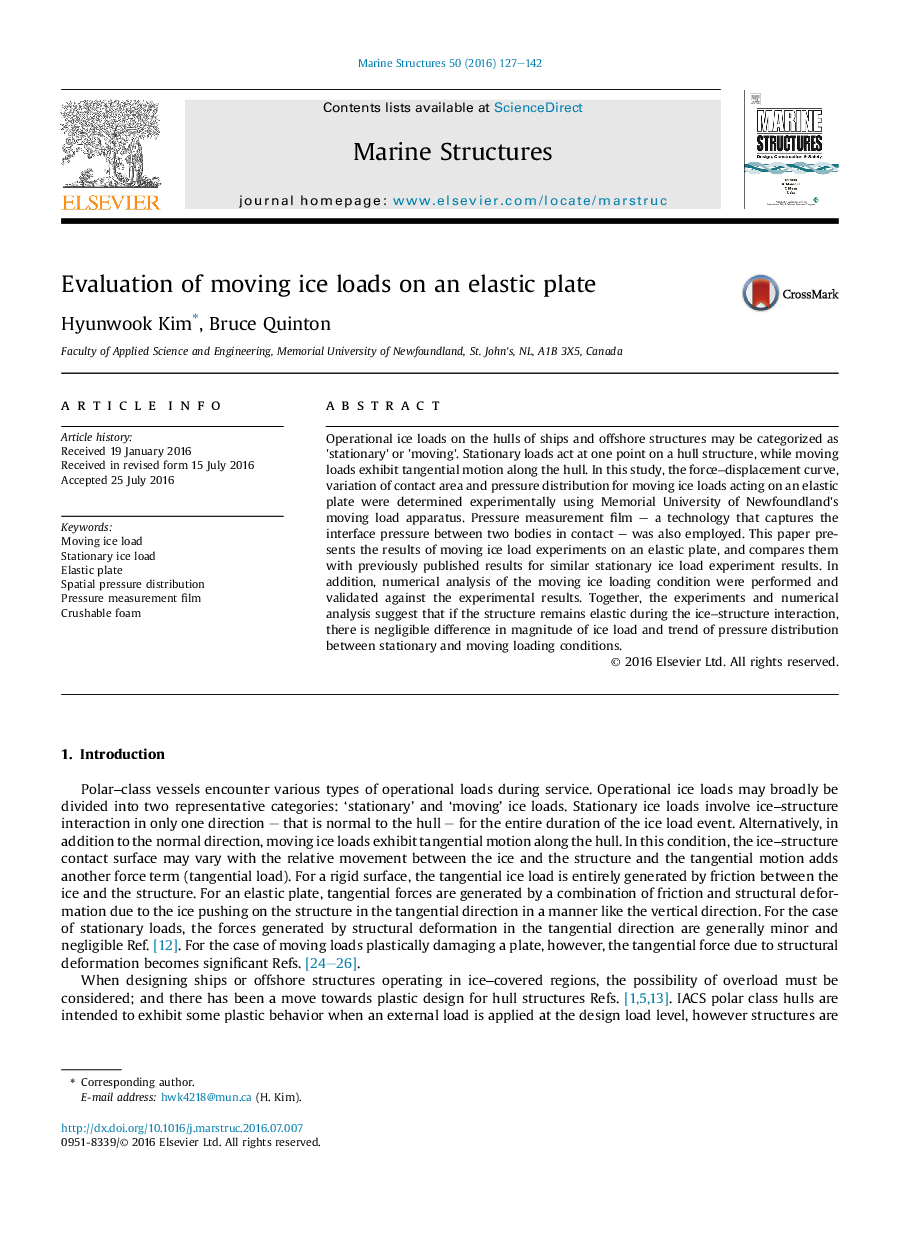| Article ID | Journal | Published Year | Pages | File Type |
|---|---|---|---|---|
| 294186 | Marine Structures | 2016 | 16 Pages |
•Results of moving ice load experiments on an elastic plate were presented.•Comparison of ‘stationary’ and ‘moving’ load in terms of ice load was discussed.•Pressure measurement film was employed to compare the spatial pressure distribution.•Difference in ice load magnitude is negligible if the structure remains in elastic.•Effect of moving ice load was assessed by numerical analysis using LS-DYNA®.
Operational ice loads on the hulls of ships and offshore structures may be categorized as 'stationary' or 'moving'. Stationary loads act at one point on a hull structure, while moving loads exhibit tangential motion along the hull. In this study, the force‒displacement curve, variation of contact area and pressure distribution for moving ice loads acting on an elastic plate were determined experimentally using Memorial University of Newfoundland's moving load apparatus. Pressure measurement film – a technology that captures the interface pressure between two bodies in contact – was also employed. This paper presents the results of moving ice load experiments on an elastic plate, and compares them with previously published results for similar stationary ice load experiment results. In addition, numerical analysis of the moving ice loading condition were performed and validated against the experimental results. Together, the experiments and numerical analysis suggest that if the structure remains elastic during the ice‒structure interaction, there is negligible difference in magnitude of ice load and trend of pressure distribution between stationary and moving loading conditions.
